#matlabsolution
Explore tagged Tumblr posts
Text
Writing Data to text file gives error,unknown parameter
hi All
I am trying to write some parameter to a py file as follows
Let’s say I have the m-file 1 that contains the parameters like p=2,,,, q=3*p ,,,,,, and tf=1
m-file 2 is a function like : mvar(m) , I always assign m=1,
file 1 runs m-file 2 that contains these lines:
fid = fopen(‘myparams.py’, ‘w’);
fprintf(fid,’p1 = %d\n’,p1);
fprintf(fid,’q = %0.12f\n’,q); fprintf(fid,’tf= %0.12f\n’,tf);
to write them on the third file myparams , it writes the first 2 but for the last one, tf , it gives error , while it is introduced in the same way also I dont know the difference of %d\n with %12f\n
the error is
Function is not defined for ‘tf’ inputs
NOTE:-
Matlabsolutions.com provide latest MatLab Homework Help,MatLab Assignment Help , Finance Assignment Help for students, engineers and researchers in Multiple Branches like ECE, EEE, CSE, Mechanical, Civil with 100% output.Matlab Code for B.E, B.Tech,M.E,M.Tech, Ph.D. Scholars with 100% privacy guaranteed. Get MATLAB projects with source code for your learning and research.
%d is used when you want to write an integer (1,2,3,…)
%f and all derivative (%12f,…) are used to write float numbers (specify the precision, add spaces,..)
see the help of fprintf.
and I just try the code bellow, it works.p = 2; q = 3*p; tf = 1 ;fid = fopen('myparams.py', 'wt'); fprintf(fid,'p1 = %d\n',p); fprintf(fid,'q = %d\n',q);
SEE COMPLETE ANSWER CLICK THE LINK
#matlab#education#promo code#matlab assignment help#assignment#programming#coding#matlabsolutions#assignment help#programming help
0 notes
Video
youtube
deep learning > MATLABSolutions || Classification of Monkey species using deep learning with MATLAB. | 2018-08-03T14:56:17.000Z
0 notes
Text
how to create speech waves with equal loudness in matlab ?
hi frnds,
i want matlab command or code for making speech waves with equal loudness in matlab i.e speech waves with same intensity and frequency.
NOTE:-
Matlabsolutions.com provide latest MatLab Homework Help,MatLab Assignment Help , Finance Assignment Help for students, engineers and researchers in Multiple Branches like ECE, EEE, CSE, Mechanical, Civil with 100% output.Matlab Code for B.E, B.Tech,M.E,M.Tech, Ph.D. Scholars with 100% privacy guaranteed. Get MATLAB projects with source code for your learning and research.
I suggest you to use Microsoft Anna (Text to Speech) and save the sound in a *.wav file or *.mp3 file.
Then import the sound file to MATLAB.
To equalize the loudness you could try this options:
Use the soundsc command:
[y1,Fs1] = audioread('myRecord1.wav'); [y2,Fs2] = audioread('myRecord2.wav'); y1n = soundsc(y1,Fs1); y2n = soundsc(y2,Fs2);
Use FFT to equalize the median dB
SEE COMPLETE ANSWER CLICK THE LINK
#assignment help#education#promo code#matlab assignment help#matlab#programming help#programming#matlabsolutions#assignment#coding
0 notes
Text
How to insert a string into a sprint?
I want the input stored into name be displayed in the %s. How can I do it? it is possible?name = input ('Enter the name of the voice command'); file = sprintf('%s.wav','name'); %name the sound file to be created
NOTE:-
Matlabsolutions.com provide latest MatLab Homework Help,MatLab Assignment Help , Finance Assignment Help for students, engineers and researchers in Multiple Branches like ECE, EEE, CSE, Mechanical, Civil with 100% output.Matlab Code for B.E, B.Tech,M.E,M.Tech, Ph.D. Scholars with 100% privacy guaranteed. Get MATLAB projects with source code for your learning and research.
Try this more user friendly and robust way to “get the name of the sound file to be created”:% Ask user for the name of the file to be created. [baseFileName, folder] = uiputfile('*.wav', 'Enter the file name of the voice command to be created') % Create the full file
SEE COMPLETE ANSWER CLICK THE LINK
#assignment help#education#matlab assignment help#assignment#matlab#promo code#matlabsolutions#programming#programming help#coding
0 notes
Text
How to import data with titles and plot on a plane ?
I have droplet diameter and coordinates in a CSV file and I want to draw the all these points in 3d space and later project them on a 2D plane. can someone suggest how can I read this data. Thanks in advance.
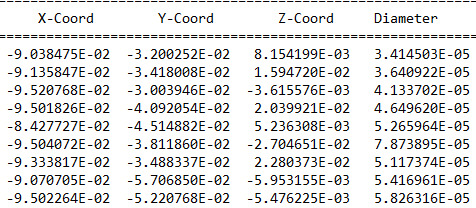
NOTE:-
Matlabsolutions.com provide latest MatLab Homework Help,MatLab Assignment Help , Finance Assignment Help for students, engineers and researchers in Multiple Branches like ECE, EEE, CSE, Mechanical, Civil with 100% output.Matlab Code for B.E, B.Tech,M.E,M.Tech, Ph.D. Scholars with 100% privacy guaranteed. Get MATLAB projects with source code for your learning and research.
I am not exactly certain what you want. One way of plotting them in 3D and also projecting them on a plane is to combine a stem3 plot and a scatter3 plot — Uz = unzip('data.zip'); % fc = fileread(Uz{1}) fidi = fopen(Uz{1},'rt'); k = 1; while ~feof(fidi) & (k<=10) rl{k,:} = fgetl(fidi); k = k+1; end fclose(fidi); VN = strsplit(rl{4}, ' '); droplets = readtable(Uz{1}, 'FileType','text', 'HeaderLines',5); droplets.Properties.VariableNames = VN(2:end-1) droplets = 4670×20 table TIME X-Coord Y-Coord Z-Coord Diameter Density U-Velo V-Velo W-Velo UT-Velo VT-Velo WT-Velo Temperatur Life_Time Weber_No Stokes_No Ident Nozzle Proc Imping ____ _________ _________ __________ __________ _______ _________ _________ _________ ___________ __________ ___________ __________ _________ __________ __________ _____ ______ ____ ______ 0.05 -0.090385 -0.032003 0.0081542 3.4145e-05 959.89 -0.031454 -0.038965 0.013472 -0.0041884 -0.0013082 0.002092 373.15 0.045 7.6791e-07 0.033496 3448 1 7 0 0.05 -0.091358 -0.03418 0.015947 3.6409e-05 959.89 -0.048048 -0.024729 0.016297 -0.0023005 -0.0014205 -0.00089046 373.15 0.0445 1.1324e-06 0.00046301 4065 1 7 0 0.05 -0.095208 -0.030039 -0.0036156 4.1337e-05 959.89 -0.027739 -0.090139 -0.030527 0.022442 -0.021859 0.0024811 373.15 0.0405 2.1372e-06 0.34806 9022 1 7 0 0.05 -0.095018 -0.040921 0.020399 4.6496e-05 959.89 -0.079326 -0.031016 0.016833 0.0010701 -0.0014528 0.0018666 373.15 0.045 3.397e-06 0.0010893 3546 1 7 0 0.05 -0.084277 -0.045149 0.0052363 5.266e-05 959.89 -0.075503 -0.059956 0.0044079 -0.00036266 -0.0015555 0.0017451 373.15 0.045 4.3691e-06 0.00056493 3396 1 7 0 0.05 -0.095041 -0.038119 -0.027047 7.8739e-05 959.89 -0.074046 -0.2798 -0.22825 -0.001181 0.0013092 -0.0007613 373.15 0.0355 0.00010153 0.0026183 11904 1 7 0 0.05 -0.093338 -0.034883 0.022804 5.1174e-05 959.89 -0.075775 -0.057902 0.049309 -0.00028933 0.0017213 0.0013845 373.15 0.0395 5.1543e-06 0.00062802 9929 1 7 0 0.05 -0.090707 -0.057069 -0.0059532 5.417e-05 959.89 -0.088391 -0.071006 -0.013249 0.00022564 0.0013297 -0.00069184 373.15 0.0435 7.0252e-06 0.00037145 5231 1 7 0 0.05 -0.095023 -0.052208 -0.0054762 5.8263e-05 959.89 -0.10234 -0.094789 -0.013927 -0.00076917 0.00018328 0.00095466 373.15 0.0445 1.0662e-05 0.0093345 4165 1 7 0 0.05 -0.089498 -0.035614 0.044709 0.00013526 959.89 -0.014238 -0.41357 0.61117 0.00063334 0.00078877 0.00083319 373.15 0.041 0.00074065 0.0022664 8373 1 7 0 0.05 -0.091463 -0.031236 0.010759 4.5083e-05 959.89 -0.053295 -0.0458 0.020416 0.0003124 0.0058428 -0.00058846 373.15 0.045 2.3234e-06 0.10925 3510 1 7 0 0.05 -0.08727 -0.036753 0.0073399 4.3337e-05 959.89 -0.054384 -0.031757 0.0052104 -0.00040866 0.0016526 -0.0001831 373.15 0.0435 2.193e-06 0.00071105 5235 1 7 0 0.05 -0.078492 -0.045156 -0.014288 5.0382e-05 959.89 -0.068305 -0.039995 -0.012197 0.0013146 -0.0024517 -0.0018704 373.15 0.045 3.5571e-06 0.00043666 3481 1 7 0 0.05 -0.09666 -0.029865 0.009483 3.4918e-05 959.89 -0.042103 -0.066528 0.022839 0.0021231 -0.014508 0.0011205 373.15 0.0445 8.4588e-07 0.24043 4038 1 7 0 0.05 -0.081006 -0.047258 -0.01738 0.00020125 959.89 0.18871 -0.6734 -0.35412 0.00011428 0.0003534 0.00036473 373.15 0.0405 0.0012263 0.0071006 8892 1 7 0 0.05 -0.090334 -0.038719
SEE COMPLETE ANSWER CLICK THE LINK
#assignment help#education#promo code#matlab assignment help#assignment#programming#coding#programming help#matlab#matlabsolutions
0 notes
Text
What would be the equation of the following surface?
I have the raw data of X, Y, Z, where X and Y are inputs and Z is the output. Plotting the surface gives the red curve in the below picture:
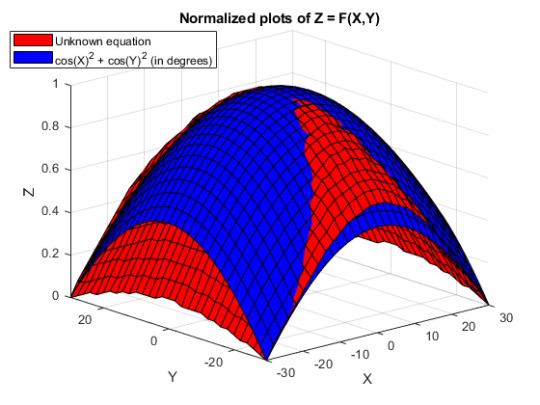
The surface seems to be a simple function involving trigonometric functions. For example, plotting the equation cos(X)^2 + cos(Y)^2 gives the blue surface and it looks similar to the red graph (but the RMS error is very large).
I have tried introducing variables (a1*cos(X)^2 + a2*cos(Y)^2), where a1 and a2 vary from 0 to 1) but the RMS error is still large.
I also tried the surface fitting functions (MATLAB's fit function) but it's models are limited (unlike the curve fitting models which include Fourier series, sin series, etc).
How can I find the equation which gives the red surface?
Edit for clarity: I am able to use the lsqcurvefit (or any other curve fitting toolbox functions) to find which coefficients to use, but I am not sure what the equation should be. cos(X)^2 + cos(Y)^2, for example, is not the right equation but it does have a similar shape.
If this seems improbabilistic, how can I vary cos(X)^2 + cos(Y)^2 to align the end curves of the surface (where there seems to be highest misalignment)?
NOTE:-
Matlabsolutions.com provide latest MatLab Homework Help,MatLab Assignment Help , Finance Assignment Help for students, engineers and researchers in Multiple Branches like ECE, EEE, CSE, Mechanical, Civil with 100% output.Matlab Code for B.E, B.Tech,M.E,M.Tech, Ph.D. Scholars with 100% privacy guaranteed. Get MATLAB projects with source code for your learning and research.



Update 3: Added some surface plots.[X, Y] = meshgrid(-1:0.05:1); %% Polynomial function c = 1; b = 1/2; a = b; Z = c - b*Y.^2 - a*X.^2; % can try higher-order polynomial functions surf(X, Y, Z), grid on title('Quadratic function'), xlabel x, ylabel y, zlabel f(x,y)
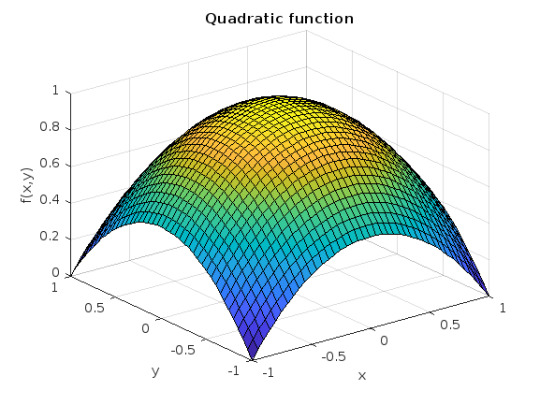
SEE COMPLETE ANSWER CLICK THE LINK
#assignment help#promo code#education#programming help#matlabsolutions#programming#assignment#matlab#matlab assignment help#coding
0 notes
Text
How to create a 2-D plot to validate filter characteristics ?
I am running a test signal (white noise) through filter so that i can validate the frequency response and magnitude.
Below is the code I’m using to test the filter%Test 1Fs = 44100 x = randn(1,44100); % Signal = randn (fs*dur,1) shall generate 1 channel signal with certain sampling frequency and duration[b1,a1]=fourbandEQ(30,0,1, 300,0,1, 1000,0,1, 5000,0,1, Fs); y = filter (b1,a1,x); % y = filter(b,a,X) Y is output signal, X is input signal, b is array of %denominator coefficients , a is numerator
NOTE:-
Matlabsolutions.com provide latest MatLab Homework Help,MatLab Assignment Help , Finance Assignment Help for students, engineers and researchers in Multiple Branches like ECE, EEE, CSE, Mechanical, Civil with 100% output.Matlab Code for B.E, B.Tech,M.E,M.Tech, Ph.D. Scholars with 100% privacy guaranteed. Get MATLAB projects with source code for your learning and research.
I can’t run your code, but the easiest way to plot the transfer function is to divide the fft of the output by the fft of the input, then do the appropriate plots:Fn = Fs/2; tf = fft(y)./fft(x); Fv = linspace(0, 1, length(tf)/2+1)*Fn; Ix = 1:length(Fv);figure(1) subplot(2,1,1) plot(Fv, abs(tf(Ix))) grid ylabel('Amplitude')subplot(2,1,2)
SEE COMPLETE ANSWER CLICK THE LINK
#education#assignment help#matlab assignment help#matlab#assignment#programming#matlabsolutions#promo code#programming help#coding
0 notes
Text
How to add two different surface curves in a single plot?
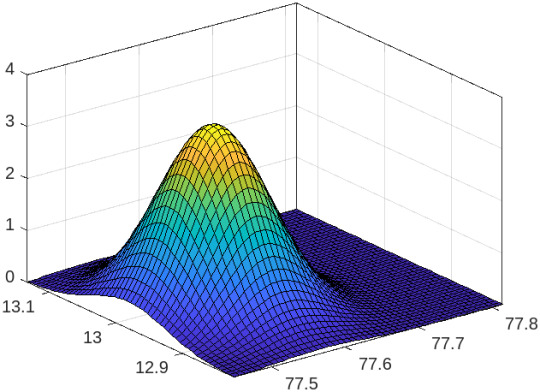
Both are the same curve the only difference is one is without point data and the other has point data.
Problem: I want to add another surface to the same plot for the same data which is at z=1 and parallel to x- and y-axis. Also, is it possible to find the values of major and minor axes of the ellipse formed from the intersection of both the surfaces. Or in other words, the values between the intersection of x and z values of both the curves and the y and z values of both the curves.
I hope I am able to express myself clearly.
NOTE:-
Matlabsolutions.com provide latest MatLab Homework Help,MatLab Assignment Help , Finance Assignment Help for students, engineers and researchers in Multiple Branches like ECE, EEE, CSE, Mechanical, Civil with 100% output.Matlab Code for B.E, B.Tech,M.E,M.Tech, Ph.D. Scholars with 100% privacy guaranteed. Get MATLAB projects with source code for your learning and research.
Try this —
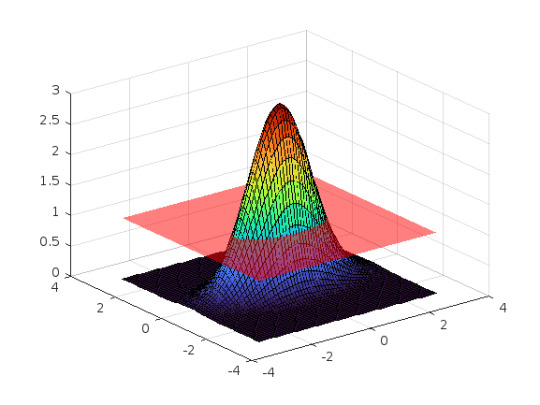
‘Also, is it possible to find the values of major and
SEE COMPLETE ANSWER CLICK THE LINK
#assignment#education#promo code#matlab assignment help#matlab#matlabsolutions#programming#assignment help
0 notes
Text
How do I get the max value within a specified range on my plot?

I am writing a program that can read in audio files of recorded guitar notes in standard tuning (e,B,G,D,A,E), plot the signal and the frequency response, then compare the frequency value from the plot with the needed frequency to be in tune. The way I was doing it, was finding the max value or highest peak from the frequency response plot, then comparing it to a specified value needed for it to be in tune. I hit a problem when I got to the G string, because as you can see from the plot, the highest peak is not the first peak, and that is where the frequency I need lies (since a G3 note has to have a frequency of 196 to be in tune), so my method doesn’t work. How can I get the max y value between the 100 & 300 frequency range, then get the x value related to that max value?%Tuning for G String gG = 196.00; %Fourier Transform of G3 On Guitar [y,Fs] = audioread('3rd_String_G_vbr.mp3'); Nsamps = length(y); t = (1/Fs)*(1:Nsamps); %Prepare time data for plot %Do Fourier Transform y_fft = abs(fft(y)); %Retain Magnitude y_fft = y_fft(1:Nsamps/2); %Discard Half of Points f = Fs*(0:Nsamps/2-1)/Nsamps; %Prepare freq data for plot %Find max y value of the highest peak in the range, then find corresponding x %value [maxYValue, indexAtMaxY] = max(y_fft); xValueAtMaxYValue = f(indexAtMaxY(1));
NOTE:-
Matlabsolutions.com provide latest MatLab Homework Help,MatLab Assignment Help , Finance Assignment Help for students, engineers and researchers in Multiple Branches like ECE, EEE, CSE, Mechanical, Civil with 100% output.Matlab Code for B.E, B.Tech,M.E,M.Tech, Ph.D. Scholars with 100% privacy guaranteed. Get MATLAB projects with source code for your learning and research.
Use the sampling frequency to find the locations with which to bound the search — HiLo=[100 300]; % frequency bounds nHiLo=round(HiLo/f); % bounding locations [maxYValue, indexAtMaxY] = max(y_fft(nHiLo(1):nHiLo(2)); indexAtMaxY=indexAtMaxY+nHiLo(1); % offset computation
SEE COMPLETE ANSWER CLICK THE LINK
#matlabsolutions#assignment help#programming#matlab#assignment#education#matlab assignment help#promo code
0 notes
Text
How to pass a audio signal through a filter?
How to pass a audio signal through a filter ? It should work based on spectral energy i.e if its between 0–4 kHz it falls on speech band and If it falls between 4 kHz-8 kHz then it comes under noise band.Now the VOS(voice operated switch) should be activated if the signal is in speech band and it should be deactivated when it is in noise band. Can some one help me on this problem.
NOTE:-
Matlabsolutions.com provide latest MatLab Homework Help,MatLab Assignment Help , Finance Assignment Help for students, engineers and researchers in Multiple Branches like ECE, EEE, CSE, Mechanical, Civil with 100% output.Matlab Code for B.E, B.Tech,M.E,M.Tech, Ph.D. Scholars with 100% privacy guaranteed. Get MATLAB projects with source code for your learning and research.
The first step is to design a filter to obtain the A and B vector coefficients.Then use the Butter function, for instance to obtain your signal(type Butter in your Matlab command window and you will find many other type of filters). Once you have obtained the B and A vector coefficients you can filter your signal using the function filter.
y=filter(x,A,B) x(is your input signal) and y your filtered signal.
SEE COMPLETE ANSWER CLICK THE LINK
#matlabsolutions#assignment help#matlab#education#programming#matlab assignment help#assignment#promo code
0 notes
Video
youtube
Stretch the dynamic range of the given 8-bit grayscale image using MATL...
0 notes
Text
Differrence between feed forward & feed forward back propagation
I used neural netowrk MLP type to pridect solar irradiance, in my code i used fitnet() commands (feed forward)to creat a neural network.But some people use a newff() commands (feed forward back propagation) to creat their neural network. please what's difference between two types?? :
net=fitnet(Nubmer of nodes in haidden layer); --> it's a feed forward ?? true?? net=newff(Nubmer of nodes in haidden layer); ---> it's a feed forward back propagation ??
Help me please wchich one can i choose for my case (prediction problem)???!!! Who appripriate??
ANSWER
Matlabsolutions.com provide latest MatLab Homework Help,MatLab Assignment Help for students, engineers and researchers in Multiple Branches like ECE, EEE, CSE, Mechanical, Civil with 100% output.Matlab Code for B.E, B.Tech,M.E,M.Tech, Ph.D. Scholars with 100% privacy guaranteed. Get MATLAB projects with source code for your learning and research.
1. Regardless of how it is trained, the signals in a feedforward network flow in one direction: from input, through successive hidden layers, to the output.
2. Given a trained feedforward network, it is IMPOSSIBLE to tell how it was trained (e.g., genetic, backpropagation or trial and error)
3. A feedforward backpropagation net is a net that just happened to be trained with a backpropagation training algorithm. The backpropagation training algorithm subtracts the training output from the target (desired answer) to obtain the error signal. It then goes BACK to adjust the weights and biases in the input and hidden layers to reduce the error.
4. Current examples of feedforward nets are
a. FITNET for regression and curve-fitting which calls the generic FEEDFORWARDNET b. PATTERNNET for classification and pattern-recognition which calls the generic FEEDFORWARDNET c. FEEDFORWARDNET
5. OBSOLETE examples of feedforward nets are
a. NEWFIT for regression and curve-fitting which calls the generic NEWFF b. NEWPR for classification and pattern-recognition which calls the generic NEWFF c. NEWFF
6. The default training functions for the above algorithms use backpropagation. However, the designer can train the nets any way they want.
SEE COMPLETE ANSWER CLICK THE LINK
https://www.matlabsolutions.com/resources/differrence-between-feed-forward-feed-forward-back-propagation.php
0 notes
Text
Do the functions FILTER2 and CONV2 perform correlation or convolution?
Do the functions FILTER2 and CONV2 perform correlation or convolution?
ANSWER
Matlabsolutions.com provide latest MatLab Homework Help,MatLab Assignment Help for students, engineers and researchers in Multiple Branches like ECE, EEE, CSE, Mechanical, Civil with 100% output.Matlab Code for B.E, B.Tech,M.E,M.Tech, Ph.D. Scholars with 100% privacy guaranteed. Get MATLAB projects with source code for your learning and research.
The function FILTER2 performs correlation, while the function CONV2 performs convolution. To see what's going on, you need to compare the output of the 'full' option with the output of the 'valid' option. If you compare these two, you'll see that the 'valid' is taking the same submatrix in both cases. The full and valid matrices are actually not dependent on the values of "f".
For example:
a = magic(5) a = 17 24 1 8 15 23 5 7 14 16 4 6 13 20 22 10 12 19 21 3 11 18 25 2 9 f = [1 0; 0 0]; filter2(f,a,'full') ans = 0 0 0 0 0 0 0 17 24 1 8 15 0 23 5 7 14 16 0 4 6 13 20 22 0 10 12 19 21 3 0 11 18 25 2 9 filter2(f,a,'valid') ans = 17 24 1 8 23 5 7 14 4 6 13 20 10 12 19 21
The 'valid' result is the (2:5,2:5) submatrix of the 'full' result.
SEE COMPLETE ANSWER CLICK THE LINK
https://www.matlabsolutions.com/resources/do-the-functions-filter2-and-conv2-perform-correlation-or-convolution-.php
0 notes
Text
Removing noise from a sine wave
Hello, I have two sets of measurement data (sine wave of 10 = Hz and fs = 2048 Hz) with lots of noise. I tried to filter them using a butterworth lowpass filter using filtfilt function.
Unfortunately, the filtered signal is not a pure sine wave and hence i couldn't use them further.
Can anyone guide me how exactly to process this signal?
PS: Can i add .fig to my post?
ANSWER
Matlabsolutions.com provide latest MatLab Homework Help,MatLab Assignment Help for students, engineers and researchers in Multiple Branches like ECE, EEE, CSE, Mechanical, Civil with 100% output.Matlab Code for B.E, B.Tech,M.E,M.Tech, Ph.D. Scholars with 100% privacy guaranteed. Get MATLAB projects with source code for your learning and research.
You might try the Savitzky Golay filter, in the Signal Processing Toolbox. It fits a polynomial to the signal in a sliding window.
My demo below is for an image but you could easily adapt it to a 1D signal. After all, an image is just a bunch of 1D signals stacked on top of each other (each row or column could be considered a 1D signal). That's what I do, just extract a row or column and call sgolayfilt() on each row or column.
% Filter using Savitzky-Golay filtering. % By Image Analyst % Change the current folder to the folder of this m-file. if(~isdeployed) cd(fileparts(which(mfilename))); end clc; % Clear command window. clear; % Delete all variables. close all; % Close all figure windows except those created by imtool. imtool close all; % Close all figure windows created by imtool. workspace; % Make sure the workspace panel is showing. fontSize = 14; % Read in standard MATLAB gray scale demo image. % imageArray = imread('football.jpg'); imageArray = imread('cameraman.tif'); imageArray = double(imageArray); [rows columns numberOfColorBands] = size(imageArray); subplot(2, 2, 1);
SEE COMPLETE ANSWER CLICK THE LINK
https://www.matlabsolutions.com/resources/removing-noise-from-a-sine-wave.php
0 notes
Text
converting a horizontal matrix to vertical
Hello. I am trying to convert a 100*2 matrix to 2*100 matrix. I appreciate if you give me any idea. The reason is I need to find the pick of negative data at second column, and I am using following code:
NEG=[find(E(:,1)<0) E(E(:,1)<0,1)]; so for using following code I need my matrix be 2*100 EE=findpeaks(NEG(:,2));
ANSWER
Matlabsolutions.com provide latest MatLab Homework Help,MatLab Assignment Help for students, engineers and researchers in Multiple Branches like ECE, EEE, CSE, Mechanical, Civil with 100% output.Matlab Code for B.E, B.Tech,M.E,M.Tech, Ph.D. Scholars with 100% privacy guaranteed. Get MATLAB projects with source code for your learning and research.
Use
transpose
, which can also be written .'
>> A = [1,2;3,4;5,6;,7,8] A = 1 2 3 4 5 6 7 8 >> A.' ans = 1 3 5 7 2 4 6 8
Comments
1 note
·
View note
Text
Can Matlab be started without certain toolboxes?
I have a license with multiple toolboxes, some of which I never need. Can I configure a start script that does not automatically load all the toolboxes?
ANSWER
Matlabsolutions.com provide latest MatLab Homework Help,MatLab Assignment Help for students, engineers and researchers in Multiple Branches like ECE, EEE, CSE, Mechanical, Civil with 100% output.Matlab Code for B.E, B.Tech,M.E,M.Tech, Ph.D. Scholars with 100% privacy guaranteed. Get MATLAB projects with source code for your learning and research.
You can remove the path of the toolbox that you do not want loaded from MATLAB search path. To find the path of all the toolboxes installed use the command:
>> path
To remove that path of a specific toolbox, use the command:
>> rmpath('put the path of the toolbox here')
For example, to remove the Wavelet Toolbox you can execute:
>> rmpath([matlabroot '\toolbox\wavelet\wavelet'])
In order to avoid executing this command every time you start MATLAB, either use savepath or add the 'rmpath' command in your 'startup.m' file.
SEE COMPLETE ANSWER CLICK THE LINK
https://www.matlabsolutions.com/resources/can-matlab-be-started-without-certain-toolboxes-.php
1 note
·
View note